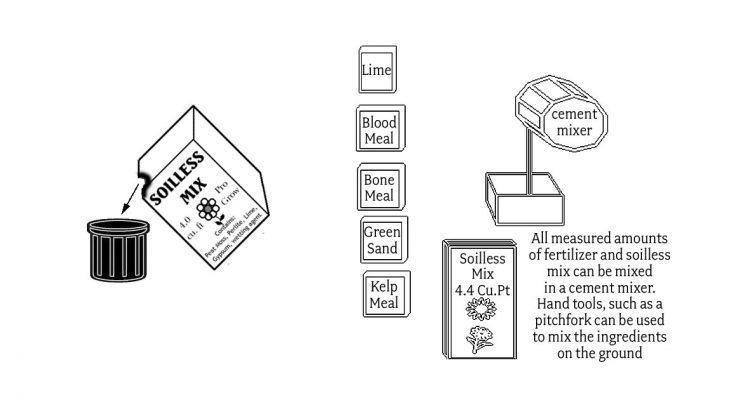Hydroponic Mediums
Choosing a Hydroponic Medium
Choosing the proper hydroponic medium is the most important factor for a successful hydroponic garden. All mediums react to a fertilizing program differently, and the cost of mediums varies dramatically. Some local materials (i.e. fir bark, kiln dried pine wood chips, small stones, and coconut fibers) are available for a cheap price.
Most large-scale hydroponic farms use large quantities of local materials to keep the costs down, but a hobbyist may get better yields from commercial products such as clay, rockwool, or sterilized soilless mix that are cheap and convenient for smaller gardens.
For any medium, it is safe to feed for 5 to 6 days, then flush for 1 day with plain water (or a low PPM solution of, say, 400PPM). Some growers add 1 to 2ml of hydrogen peroxide / gallon of plain water during flushing to disinfect the system.
A grower can flush throughout a plant’s life cycle until within two weeks of harvest. Two weeks prior to harvest, growers often flush out the medium with a low PPM solution to get maximum flavor.
Preparing Mediums
Perlite compacts and should stand in a container of water for about a half hour. Fine particles of perlite will sink to the bottom of the water. The floating perlite is useful; what goes to the bottom of the barrel can go into compost or garden. Perlite is a good medium, but it does not cling on to elements. Therefore, plants must be well fed.
Clay floats, and should be soaked or sprayed until the water running through it becomes clear. Rinsing clay is similar to washing rice until the water runs clear. Clay is negatively charged and attracts positive ions such as calcium and potassium. Soaking rocklike mediums such as clay in water and 35% hydrogen peroxide (i.e. 2 to 5 ml / gallon of water) helps to sterilize the medium from any potential diseases. Sun heat helps sterilize mediums, too.
Careful Alert
Perlite and other mediums can clog the feeding system and keep it from allowing the solution to pump in, or to drain. All screens and filters may need a periodic cleaning and the pump should have panty hose (if used) cleaned during a reservoir change.
Reusing Mediums
All mediums (except disposable mediums like rockwool) can be reused if all roots are removed from the medium, and medium is sterilized between crops. For example, clay, soilless mix, and round stones can be used indefinitely. Mediums can safely be sterilized with an application of 35% hydrogen peroxide (2 to 5 ml / gallon of water). Most mediums such as perlite can be composted or used immediately to improve soil. For example, broken down wood chips can go into compost, while perlite and soilless mix can go directly into the garden.
Mediums should be cleaned as soon as a crop is completed to avoid molds. Molds often build up while a moist medium (such as clay) sits unused. If necessary, a citrus cleanser can be used to clean the medium so that all molds and waxy buildup are removed. After the citrus cleanser is applied, the medium should be rinsed with plain water to remove the soaplike bubbles. A little leftover cleanser in the medium will not harm the plants.
Reusing Soilless Mix
Soilless mix can be sterilized with calcium peroxide so that the medium can be reused to grow more crops.
When the indoor crop is finished, the mix can be reused. This is beneficial, because after each crop is done, the grow mix retains its investment value, since it can be reused indefinitely.
The mix can be flushed with water until the PPM runoff is near 0 PPM.



